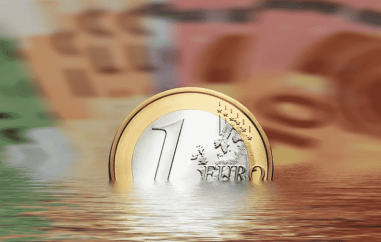
 Germany is bringing up the rear in terms of economic growth in the euro zone and the EU. According to the European Commission’s fall forecast, German gross domestic product (GDP) will grow by another 1.6 percent this year, but will then decline by 0.6 percent next year. Alongside Latvia (minus 0.3 percent), Germany is the only eurozone country for which the Commission is forecasting negative growth for the year as a whole. The main reason for Germany’s weak performance is high energy prices.
Germany is bringing up the rear in terms of economic growth in the euro zone and the EU. According to the European Commission’s fall forecast, German gross domestic product (GDP) will grow by another 1.6 percent this year, but will then decline by 0.6 percent next year. Alongside Latvia (minus 0.3 percent), Germany is the only eurozone country for which the Commission is forecasting negative growth for the year as a whole. The main reason for Germany’s weak performance is high energy prices.
As these would remain elevated until well into 2024 and the aid programs would only partially relieve households, private consumption would fall this winter and recover only slowly, the Commission’s analysis says. Economic activity will be dampened in the coming quarters by the fact that energy-intensive products will no longer be manufactured in-house and will have to be replaced by imports, it said. The order backlog, while still high, is declining, it adds. Supply bottlenecks are decreasing, but are continuing to restrict production.
The Commission’s forecast is thus more pessimistic than those of the German government and the economic experts, who expect a decline of 0.4 percent and 0.2 percent, respectively. In its last forecast in the summer, the Commission had even predicted growth of 1.3 percent for 2023. By comparison, the French economy is expected to grow by 0.4 percent in 2023, and the Italian economy by 0.3 percent. In 2024, the German economy is then expected to grow by 1.4 percent again. That would still be below the average for the euro zone, for which the Commission expects growth of 1.5 percent.
Overall, the EU Commission expects hardly any economic growth next year due to the energy crisis resulting from the Ukraine war – but significantly more inflation than recently. GDP in the euro zone is expected to grow by a meager 0.3 percent in 2023. In the summer, the EU had still estimated growth of 1.4 percent. For the final quarter of 2022, the Commission assumes that the euro zone as a whole and most of its member countries will slip into recession. The reasons for this are great uncertainty, high energy price pressure, loss of purchasing power among private households, the weaker external economic environment and stricter financing conditions.
Due to surprisingly good growth in the first half of 2022, however, the economy is likely to expand by 3.2 percent over the year as a whole, which is stronger than the 2.6 percent growth forecast in the summer. Inflation, on the other hand, is likely to be even stronger than already assumed. The Commission now expects 8.5 percent in 2022 and 6.1 percent next year. The inflation rate is not expected to fall significantly until 2024, to 2.6 percent.
There is even a risk that the European economy, and above all the German economy, will perform even worse than predicted by the Commission. There is a great risk that the forecasts will have to be revised downward, said Paolo Gentiloni, the Commissioner for Economic and Monetary Affairs, when presenting the fall forecast. The greatest risk, he said, was that developments on the gas market would deteriorate and supply bottlenecks would occur. This would affect the winter of the coming year in particular. If the EU does not succeed in offsetting the Russian gas supply freeze by importing from other countries and reducing consumption sufficiently, this will have enormous economic costs. The economy could then fall by another 0.9 percentage points in 2023 and another 0.5 percentage points in 2024.
Image by Gerd Altmann






